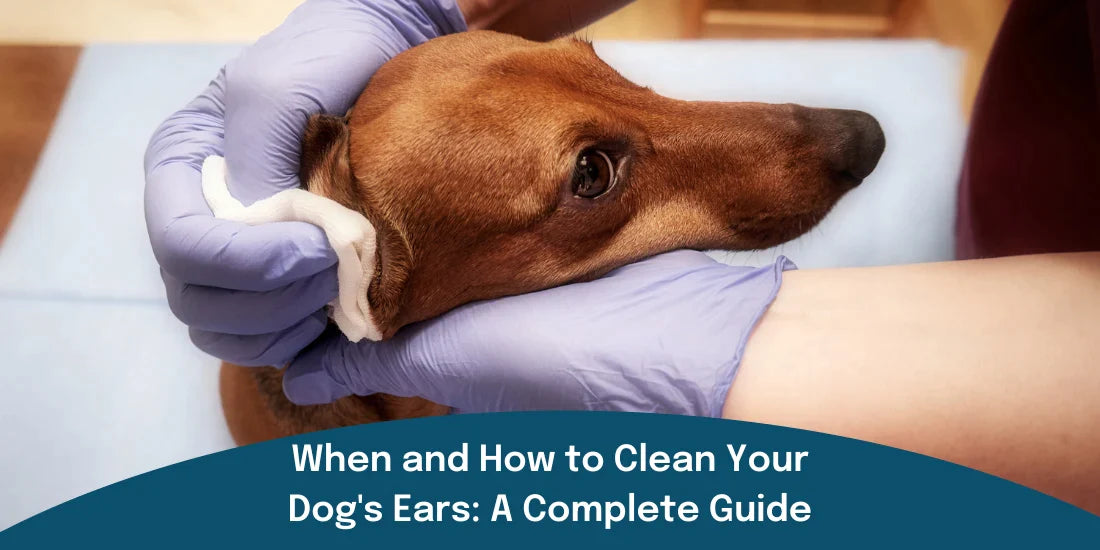
When and How to Clean Your Dog's Ears - A Complete Guide
|
|
Time to read 3 min
|
|
Time to read 3 min
As a dog owner, it's your responsibility to take care of your best friend's overall hygiene. This includes keeping their ears clean and healthy but you may have a few questions about how to clean your dog's ears such as:
In this article, we'll answer all your questions and give you practical tips on how to clean your dog's ears.
In truth, there's no hard and fast answer to how often you should clean your dog's ears as every dog is different. However, some dogs are more prone to ear infections, wax build-up, and other ear problems.
Larger, floppy-eared dogs like Bloodhounds and Spaniels tend to have more significant ear hygiene concerns. This is due to their longer ear canals, which make them more susceptible to infections and irritation. If your dog falls into this category, it's important to keep their ears clean and dry to prevent any discomfort or disease.
Smaller dogs with shorter ears like Chihuahuas and Dachshunds have fewer ear hygiene concerns but may still require occasional cleaning. Their shorter ear canals allow more airflow and less moisture buildup, but they can still catch debris and wax. However if your dog doesn't produce much wax, then cleaning their ears once a month may be enough.
It's important to pay attention to your dog's habits and symptoms and ask your vet for advice when in doubt.
Your dog may not use words to let you know they need ear cleaning, but they'll show you signs. One obvious sign is excessive scratching or pawing at their ears, indicating discomfort or irritation. Other symptoms may include shaking their head, redness, discharge, or a foul odour.
If any of these signs appear, it's time to take a closer look and clean their ears. Remember that your dog's ears are very sensitive, so it's crucial to handle them gently and use safe, effective cleaning methods.
Before you start cleaning your dog's ears, you need to gather some essential equipment like:
Make sure you choose an ear cleaning solution that's specifically designed for dogs and avoid using alcohol, hydrogen peroxide, or other harmful substances.
To start cleaning follow these two easy steps:
Be careful not to insert the cotton ball too deeply into the ear canal as that can damage the eardrum or cause pain. Also, if you notice any signs of infection or inflammation, stop cleaning and take your dog to the vet for a check-up.
Probiotics can play a surprising role in maintaining your dog's ear health, helping to clean from the inside out. These beneficial bacteria contribute to a balanced gut microbiome, which is integral to your dog's overall health, including their ears. When your dog has a robust population of probiotics in their gut, it helps their immune system fight off harmful bacteria that could lead to infections, including those in the ears.
The addition of a high strength probiotic can prevent ear infections, yeast build up and more! Plus, fermented foods like kefir or yoghurt can also be a good source of probiotics. Remember though, every dog is unique, so what works for one might not work for another.
Cleaning your dog's ears should be an essential part of their overall hygiene routine. However, it's vital to know when and how to do it safely and effectively.
Remember to handle your dog's ears gently and reward them with treats to make the experience positive. Finally, if you notice any signs of infection or discomfort, seek advice from your vet.
Taking care of your dog's ears can reduce the risk of infections, injuries, and other ear conditions, keeping them healthy, happy, and pain-free.